Glenoid Labrum Tear Treatment
Glenoid labrum tear refers to an injury in which the cartilage lining the shoulder tears causing pain and other symptoms. The injury is usually due to an impact trauma, such as a direct blow to the shoulder or a fall. It may occur over time as well from playing sports that involve a lot of shoulder movement.
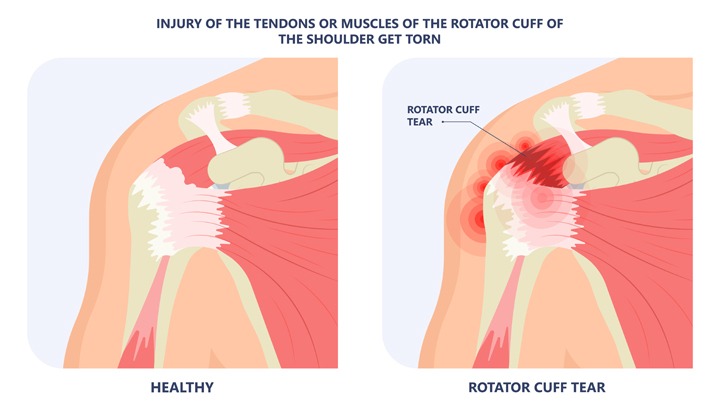 Fortunately, glenoid labrum tear can be treated in both surgical and nonsurgical way. Often times, surgical procedures are recommended if the symptoms fail to go away or if the tear is severe.
Fortunately, glenoid labrum tear can be treated in both surgical and nonsurgical way. Often times, surgical procedures are recommended if the symptoms fail to go away or if the tear is severe.
Thomas & Bigler Knee and Shoulder Institute, led by board certified orthopedic surgeons Dr. Steven C. Thomas and Dr. Gregory T. Bigler, provides orthopedic surgery to patients in Las Vegas, Nevada, while also serving areas such as greater Pahrump, Bullhead City, Lake Havasu, and Mesquite, NV.
Understanding a Glenoid Labrum Tears
Shoulder joint tears or glenoid labrum tears refers to a tear in the cartilage reinforcing or lining the shoulder joint. Shoulder socket injuries are generally caused by repetitive shoulder motions or acute trauma. This can be by falls or direct blows to the shoulder. It can also occur because of a violent overhead reach or a sudden pull.
Weight lifters and throwing athletes are susceptible to such tears because of the repetitive shoulder motions required by their sport. Glenoid larum tears can happen below (inferior) or above (superior) the center of the glenoid socket. It may tear entirely or partially.
Symptoms of Glenoid Labrum Tear
Glenoid labrum tears can result in the following symptoms:
- Shoulder dislocation
- Instability in the shoulder
- Decreased range of motion
- Strength loss
- Occasional pain during the night
- Pain while performing daily activities
- Pain during overhead activities
- Sensation that the shoulder is locking, catching, grinding or popping
Nonsurgical Options
Your physician will ask you to rest and prescribe anti-inflammatory medications to relieve symptoms until a diagnosis is made. They may also recommend rehabilitation exercises to strengthen and improve flexibility in your rotator cuff muscles.
Nonsurgical methods are often effective at relieving symptoms. They also help in healing the injured bone structure. Your doctor may recommend getting a surgery if the nonsurgical measures are inadequate.
Surgical Treatment for Glenoid Labrum Tear
The physician, depending on the injury may choose a traditional arthroscopic or open procedure. In this the surgeon will use miniature instruments and small incisions. The doctor will assess and examine the biceps tendon and the rim completely during both the surgeries.
The shoulder is stable if the surgeon only looks at the rim and doesn’t examine the tendon. The torn flap will be removed if the shoulder is stable to fix all problems. The biceps tendon may be considered unstable if the tear extends all the way down to the biceps tendon or if the tendon gets completely detached.
The tendon will need to be transferred using absorbable sutures, screws and tacks or repaired if this is the case. Tears below the socket require the ligament to be reattached. The shoulder is then tightened by pleating the tissues.
Orthopedic surgeons Dr. Thomas and Dr. Bigler receive patients from Las Vegas, Nevada as well as greater Pahrump, Bullhead City, Lake Havasu, and Mesquite, NV for orthopedic surgery.
Contact Board Certified Surgeons Dr. Bigler or Dr. Thomas at the Knee and Shoulder Institute in Las Vegas, NV to Schedule an Appointment:
If you would like to schedule an appointment or learn more about the Knee and Shoulder Institute procedures & treatments performed by Las Vegas, Nevada board-certified surgeons Steven C. Thomas, MD and Gregory T. Bigler, MD. Contact the office today click here.
Serving patients from and around greater Las Vegas, Lake Havasu, Bullhead City, Mesquite, Pahrump, Nevada

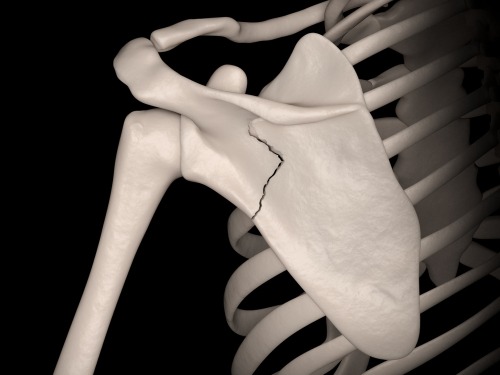 Shoulder blade fractures are not very common injuries. They can result in inflammation and pain in the shoulder arc. Shoulder blade fractures can be caused by blunt and high energy trauma incidents. This can be in the form of car accidents or falls. This fracture type is generally treated in non-surgical ways. However, they may require surgery in some instances depending on its severity.
Shoulder blade fractures are not very common injuries. They can result in inflammation and pain in the shoulder arc. Shoulder blade fractures can be caused by blunt and high energy trauma incidents. This can be in the form of car accidents or falls. This fracture type is generally treated in non-surgical ways. However, they may require surgery in some instances depending on its severity. You get a dislocated shoulder when the bone in the upper arm falls out of your shoulder socket. Shoulder dislocation can be of several different types. They are primarily identified on the basis of the direction in which the bone dislocates and the extent of the injury.
You get a dislocated shoulder when the bone in the upper arm falls out of your shoulder socket. Shoulder dislocation can be of several different types. They are primarily identified on the basis of the direction in which the bone dislocates and the extent of the injury.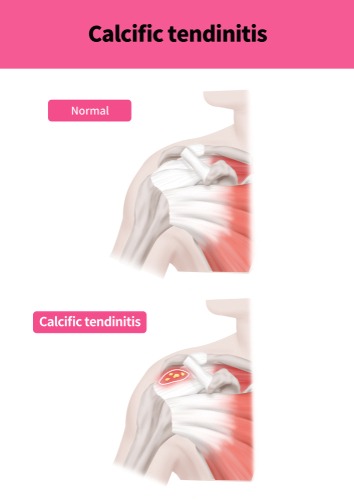 Calcific tendinitis of the shoulder refers to a condition in which the shoulder tendons or the rotator cuff becomes inflamed. Calcium deposits may start to build up, causing bonelike structures. Calcific tendinitis of the shoulder usually occurs in the age group 40 to 60. It is caused because of shoulder overuse. However, there are surgical and non-surgical treatment options to help you resume normal motion and your daily routine.
Calcific tendinitis of the shoulder refers to a condition in which the shoulder tendons or the rotator cuff becomes inflamed. Calcium deposits may start to build up, causing bonelike structures. Calcific tendinitis of the shoulder usually occurs in the age group 40 to 60. It is caused because of shoulder overuse. However, there are surgical and non-surgical treatment options to help you resume normal motion and your daily routine.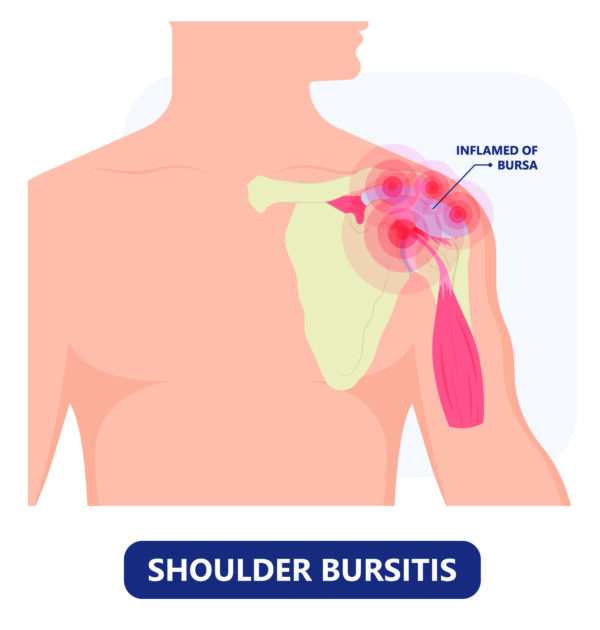 The shoulder joint has a fluid filled sac that becomes inflamed in bursitis of the shoulder. The inflammation causes pain and restricts normal motion. The condition doesn’t usually happen without any external trigger. Generally, bursitis of the shoulder is accompanied by rotator cuff tendonitis, which is the inflammation of the rotator cuff or shoulder tendons.
The shoulder joint has a fluid filled sac that becomes inflamed in bursitis of the shoulder. The inflammation causes pain and restricts normal motion. The condition doesn’t usually happen without any external trigger. Generally, bursitis of the shoulder is accompanied by rotator cuff tendonitis, which is the inflammation of the rotator cuff or shoulder tendons.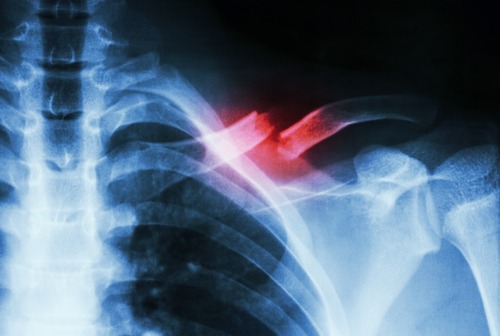 Broken collarbone or a clavicle fracture is one of the most common fractures. It usually occurs after the individual suffers a serious accident or fall. Most collarbones heal with the help of a sling. However, surgical treatments may be required in certain rare and serious cases where the bone has moved too far out to heal without medical intervention.
Broken collarbone or a clavicle fracture is one of the most common fractures. It usually occurs after the individual suffers a serious accident or fall. Most collarbones heal with the help of a sling. However, surgical treatments may be required in certain rare and serious cases where the bone has moved too far out to heal without medical intervention.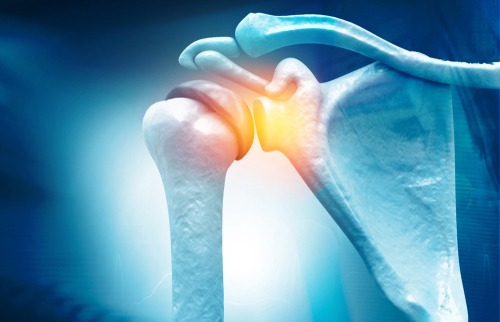 Bioinductive implant is a revolutionary new procedure for treating patients that have rotator cuff disease. Tendons can heal through the Rotation Medical Bioinductive Implant by introducing new tissue growth. This helps patients perform regular activities much quicker than traditional treatments. The procedure helps in reducing the risk of re-tears and degeneration as well.
Bioinductive implant is a revolutionary new procedure for treating patients that have rotator cuff disease. Tendons can heal through the Rotation Medical Bioinductive Implant by introducing new tissue growth. This helps patients perform regular activities much quicker than traditional treatments. The procedure helps in reducing the risk of re-tears and degeneration as well.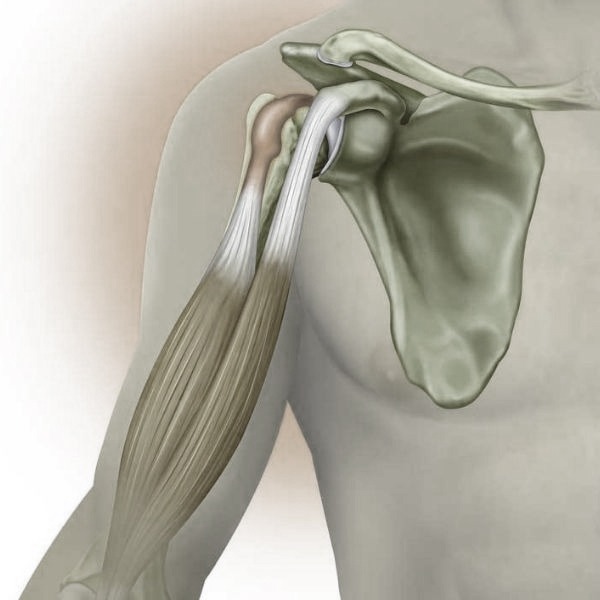 Biceps tendonitis is usually treated with a surgical procedure called biceps tenodesis. Biceps tendonitis is also known as biceps tendon tear. The surgery is usually recommended for people that suffer from shoulder pain because of biceps tendonitis. The pain is usually caused by inflammation and doesn’t improve with non-surgical treatment.
Biceps tendonitis is usually treated with a surgical procedure called biceps tenodesis. Biceps tendonitis is also known as biceps tendon tear. The surgery is usually recommended for people that suffer from shoulder pain because of biceps tendonitis. The pain is usually caused by inflammation and doesn’t improve with non-surgical treatment.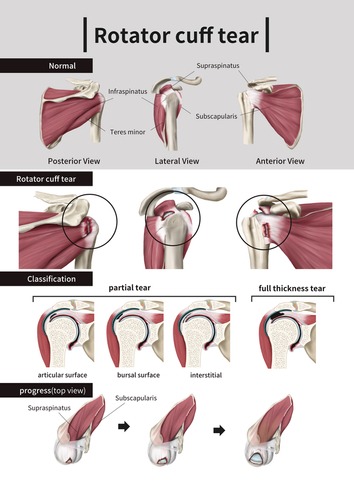 You can suffer from a rotator cuff tear after falling or another significant injury. Degeneration and prolonged breakdown of the associated tendon can also result in a rotator cuff tear. Pain while sleeping and radiating pain on the affected side are common symptoms of a rotator cuff tear. You may also experience arm weakness while trying to perform your daily activities.
You can suffer from a rotator cuff tear after falling or another significant injury. Degeneration and prolonged breakdown of the associated tendon can also result in a rotator cuff tear. Pain while sleeping and radiating pain on the affected side are common symptoms of a rotator cuff tear. You may also experience arm weakness while trying to perform your daily activities.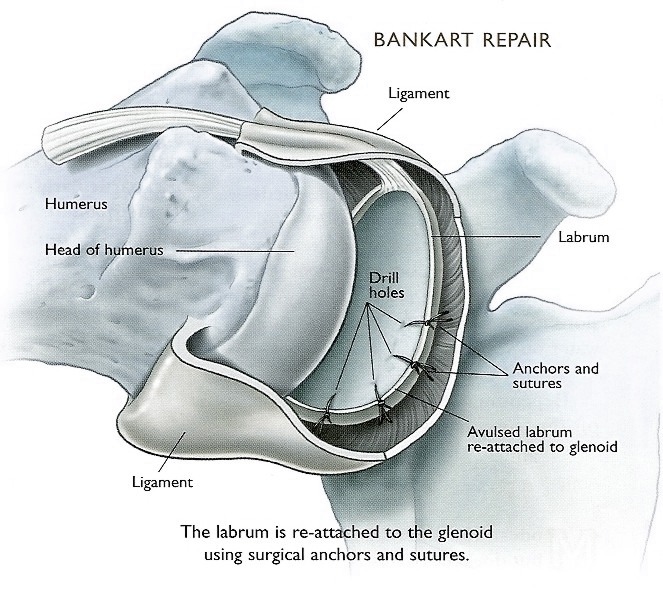 Bankart Repair in a minimally invasive procedure that will repair torn shoulder ligaments. Ligaments in the shoulder can tear when the shoulder dislocates or is bent out of place. The procedure makes use arthroscopy that helps in attaining faster, smoother and a less painful recovery.
Bankart Repair in a minimally invasive procedure that will repair torn shoulder ligaments. Ligaments in the shoulder can tear when the shoulder dislocates or is bent out of place. The procedure makes use arthroscopy that helps in attaining faster, smoother and a less painful recovery.